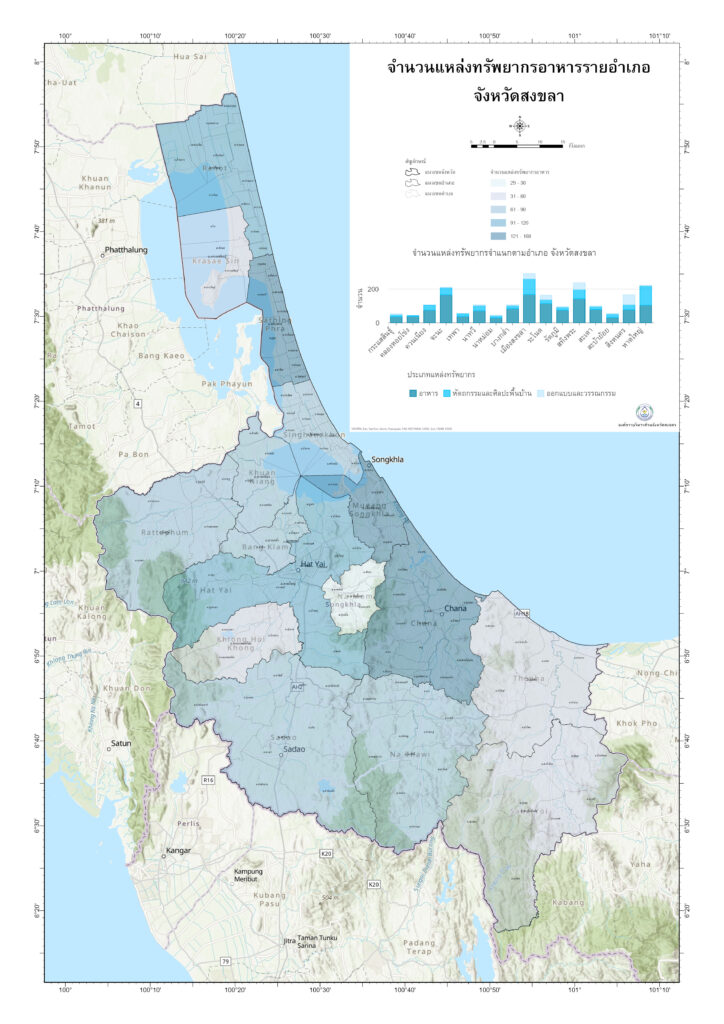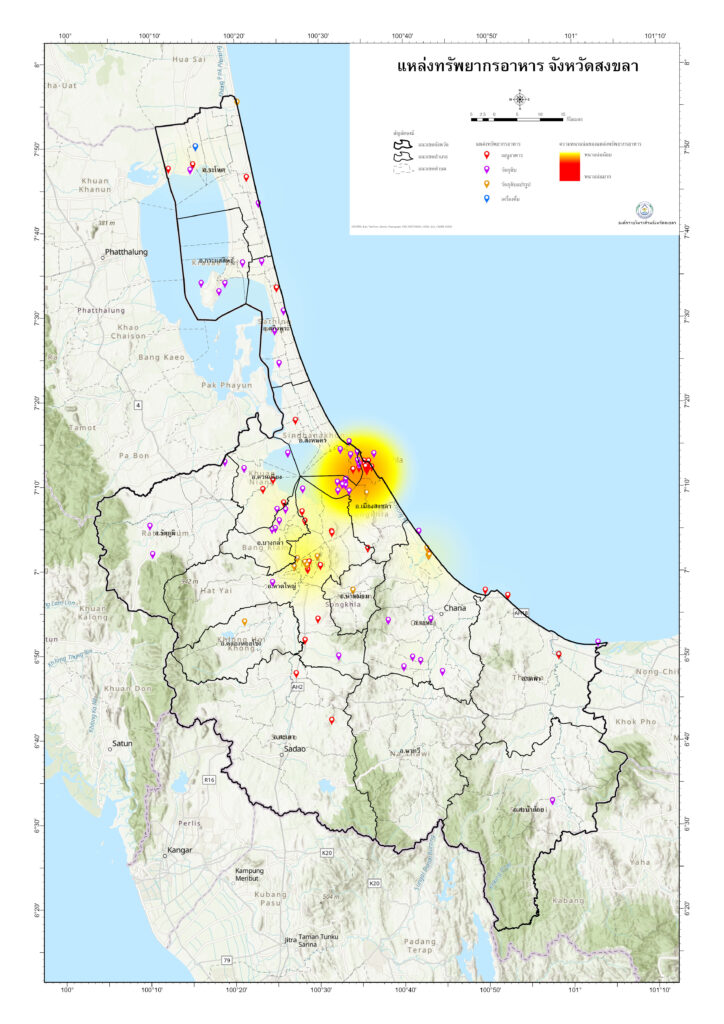Songkhla Lake is the largest source of raw materials in Songkhla Province, with a biodiverse ecosystem of fresh water, brackish water, and saltwater which provide suitable environments for a variety of high-quality aquatic creatures. Raw materials are also processed locally to add value in districts surrounding the lake, such as Krasae Sin, Ranot, Singhanakohn, Mueang Songkhla, and Khuan Niang.

Food culture in Songkhla Province is concentrated primarily in the areas of Mueang Songkhla and Hat Yai. In Mueang Songkhla District, unique local dishes can be found in the Old Town of Bo Yang Subdistrict, reflecting the cultural relationships formed from the area’s historical role as a center of trade and government. The multicultural community includes residents of Chinese, Thai, and Malay descent, who thus offer a variety of Chinese, Thai, and Muslim inspired dishes respectively, both sweet and savory, which can be organized into the following categories.
- Prepared dishes: fully cooked and ready to eat food, including both sweet and savory dishes.
- Raw ingredients: sources of unprocessed primary ingredients used to prepare dishes.
- Processed ingredients:food sources processed to preserve the original ingredient in a varied form and increase shelf life, including dried, candied, pickled, and fermented goods, as well as items processed with additional ingredients to create new forms, such as flour used to make fish balls and Chinese-style sausage. เป็นกลุ่มของแหล่งอาหารที่เป็นวัตถุดิบที่ผ่านกระบวนการแปรรูป ซึ่งอาจจะเป็นการแปรรูปวัตถุดิบโดยยังคงรูปของวัตถุดิบเดิมไว้ ซึ่งอาจจะเป็นการถนอมวัตถุดิบให้อยู่ได้นานมากขึ้น เช่น การตากแห้ง การเชื่อม การดอง การหมัก ฯลฯ รวมถึงการแปรรูปวัตถุดิบโดยการเพิ่มส่วนผสมอื่นเพื่อพัฒนาวัตถุดิบเดิมให้เป็นวัตถุดิบรูปแบบอื่น เช่น แป้ง ลูกชิ้น กุนเชียง ฯลฯ
- Seasoning: group of food sources that use raw materials that are processed with various ingredients to be used as ingredients in cooking to create a specific taste, such as curry paste, chili paste, seasoning sauce, etc.
- Beverages: sources of drinkable items derived either from raw ingredients, processed ingredients, or various other methods to create a distinct beverage.
In Hat Yai District, food culture is focused mainly around the urban areas of Hat Yai City, featuring dishes based on traditional Chinese and Southern Thai cuisine. Hat Yai developed as an economic center due to construction of the railway and Hat Yai Junction Station, which encouraged migration for ownership of land and livelihood. The first immigrants to settle were Chinese who reserved and purchased land from local residents, subsequently developing and increasing the area’s economic prosperity. Accordingly, the cuisine found in Hat Yai still retains clearly the cultural influence inherited from traditional Chinese gastronomy.
